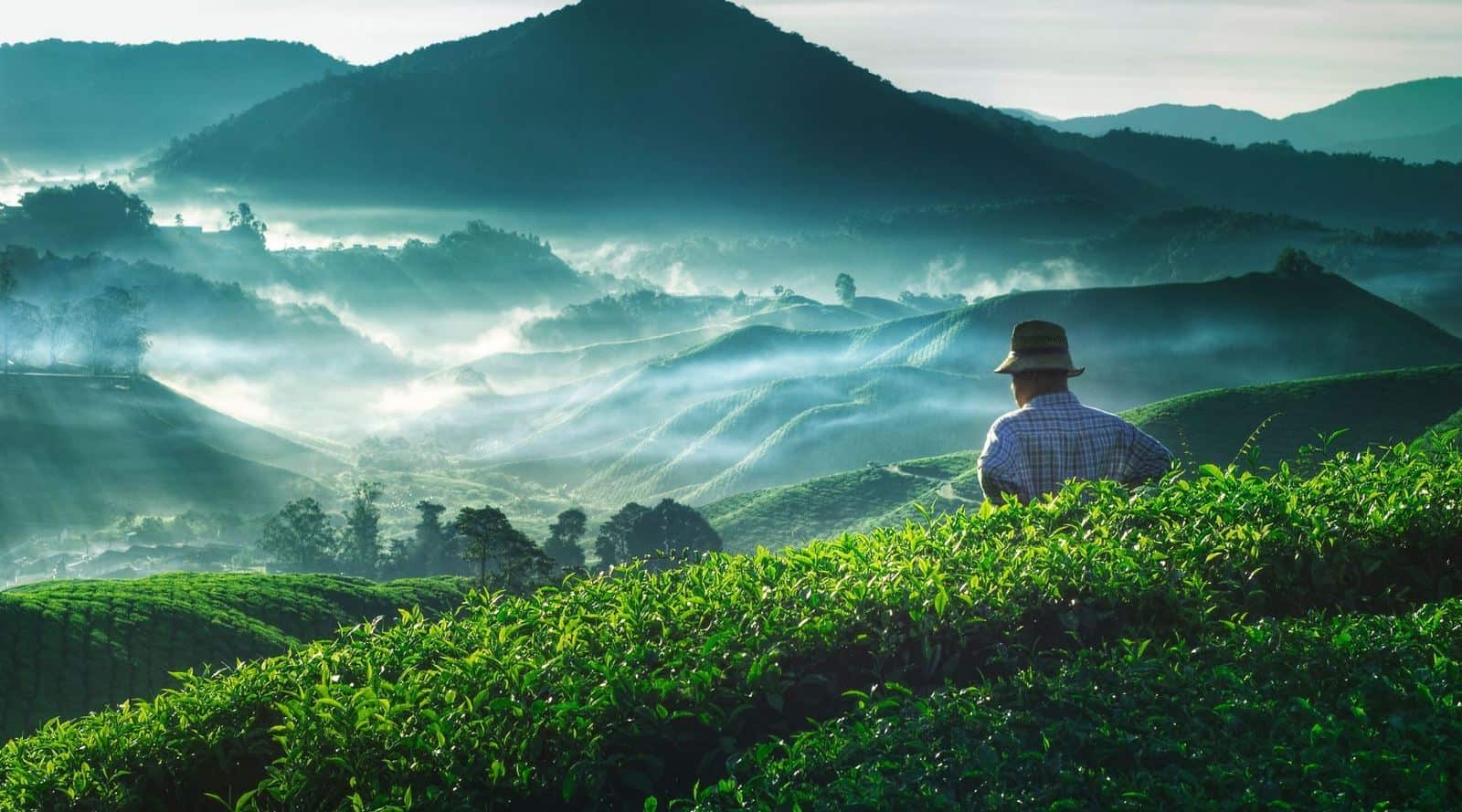Climate is a critical factor in determining both where the tea plant can be grown and the quality of tea grown in a particular area. However, the tea plant is adaptable and can be grown in a wide range of climatic conditions.
Unlike other plants, tea plants can handle light snow or frost, but not prolonged cold winters or heavy freezes. The tea plant can thus grow from tropical climates to subtropical climates, but typically requires high humidity and heavy rainfall (between 150 cm and 250 cm) during the growing season.
What are the ideal climate conditions required for growing tea?
1. Temperature between 21 and 29
Temperature plays a critical part in the growth, yield and quality of tea. Tea requires cool to warm temperatures with at least 5 hours of sunlight per day. The mean annual temperature during the growing season is between 18 and 21.
2. Rainfall between 150 cm and 250 cm
Tea needs heavy rainfall in the form of frequent showers, without extended freezing periods in the winter. Moreover, the rain should be well-distributed throughout the year because tea does not tolerate drought (or extended dry periods) well. Most commercially-managed tea operations are located on hill slopes in the highlands where drainage is good. Waterlogged lowlands
are less suited for cultivating tea because tea cannot withstand stagnant water.
3. High humidity
The ideal relative humidity during the growing season is 70% to 90%. High humidity, morning fog, and heavy dew favor the growth of buds and young leaves. If the relative humidity during the growing season is below 40%, shoot growth is greatly inhibited. Growers depend on ample humidity and precipitation to develop the foliage that is eventually harvested for tea. On the other hand, they also rely on dry periods to pluck the tea.
With an eye towards understanding the climatic conditions required for cultivating the tea plant, it’s particularly important to keep in mind that geography plays a crucial role in determining the climate of a particular region.
How does geography influence climate?
Altitude influences climate
Altitude or elevation is one of the biggest regional or local influencers of climate. As you go to a higher altitude, rainfall becomes higher, temperatures generally become more variable, but humidity becomes lower. This can be attributed to a wide range of processes such as orographic lift.
Air pressure is lower at higher altitudes, so air expands and this process cools the air. Air expands as it rises and is hence unable to hold all its water vapor leading to the formation of clouds, which often cause precipitation such as snow or rain. This is commonly known as orographic lift. It explains why the wind facing (windward) side of a mountain has high precipitation
and the leeward side tends to be dry. Since tea is a water-loving plant, it is commonly grown on the windward side of the mountain range.
Although tea can be grown at varying altitudes, teas grown in higher altitudes tend to exhibit many desirable traits and often fetch a higher price compared to teas grown in lower altitudes. However, at some point the conditions become too cold to grow tea. The highest commercial tea plantations are about 2400m (about 8000 feet) in elevation.
Moisture impacts climate
Both the water vapor in air as well as bodies of water, such as oceans and lakes hold substantial amounts of heat. Regions that have more water warm up and cool off slowly, whereas dry regions tend to heat up and cool down quickly. Therefore, water moderates temperatures in an area.
How does climate influence the quality of tea?
Even in regions that are equally capable of cultivating tea, the quality of the final product can be greatly impacted by climate conditions. Differences in quality are caused both by changes in the chemical composition in of the plant in response to the growing conditions and by chemical changes that may occur during processing.
Seasonality of precipitation is also an important factor in determining the quality of tea, and leaves harvested during different seasons produce a finished product with different characteristics. This explains why many regions that are well-known for tea production have strongly seasonal climates.

